Long overlooked and underrated as a tourism destination, Taiwan is slowly getting the reconnaissance that it deserves, and the island is now attracting over five million tourists a year. Although most are visitors from China, Japan, Korea, and other countries in the region, more and more travelers from Europe and North America find their way to Taiwan, attracted by its stunning scenery, gorgeous beaches, great hiking, hot springs, jungle-covered mountains, and cities with unique attractions. It is also a place where one can witness genuine, ancient Chinese culture.
The land and the people
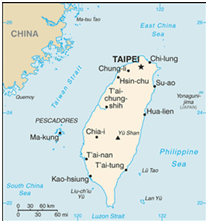 Located in the South China Sea in East Asia, Taiwan is separated from the Chinese mainland by the Taiwan Straits, and is surrounded by Japan to the North, The Philippines to the South, and the Pacific Ocean to the East. Taiwan straddles the Tropic of Cancer and is at the same latitude as Mexico or Egypt. Roughly the size of Holland, the main island is covered with rugged mountains that make up more than two thirds of its surface turning it in a hiker’s paradise. Mount Jade, the highest mountain in East Asia at 3952m, is one of more than 200 peaks rising above 3000 meters which dot the central mountain range.
Located in the South China Sea in East Asia, Taiwan is separated from the Chinese mainland by the Taiwan Straits, and is surrounded by Japan to the North, The Philippines to the South, and the Pacific Ocean to the East. Taiwan straddles the Tropic of Cancer and is at the same latitude as Mexico or Egypt. Roughly the size of Holland, the main island is covered with rugged mountains that make up more than two thirds of its surface turning it in a hiker’s paradise. Mount Jade, the highest mountain in East Asia at 3952m, is one of more than 200 peaks rising above 3000 meters which dot the central mountain range.
 Most of the 23 million people who live in Taiwan occupy urban centers on the western plains, making Taiwan one of the most densely populated countries in the world. Those used to the melting pots of North America and Europe, will find Taiwan’s population extremely homogenous; Han Chinese make up 98 percent of the population, Taiwan Aborigines representing the remaining 2 percent often live in remote parts of the island. Although it is quite common to see foreigners and people of other ethnic background in Taipei and the other major cities, it is still a rare sight in many parts of the country.
Most of the 23 million people who live in Taiwan occupy urban centers on the western plains, making Taiwan one of the most densely populated countries in the world. Those used to the melting pots of North America and Europe, will find Taiwan’s population extremely homogenous; Han Chinese make up 98 percent of the population, Taiwan Aborigines representing the remaining 2 percent often live in remote parts of the island. Although it is quite common to see foreigners and people of other ethnic background in Taipei and the other major cities, it is still a rare sight in many parts of the country.
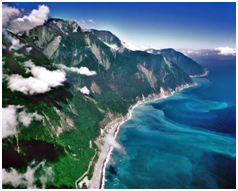 Mandarin Chinese is the official language in Taiwan and is spoken by almost everyone. The local Taiwanese dialect is more prevalent in the south of the country than in the north, and the Hakka dialect as well as Aborigine tribal languages are sometimes spoken at home by members of these communities. English is taught at school, but fluency varies greatly; foreigners should not assume that everyone speaks English or they might be in for a lot of frustration. Having said that, Taiwanese people will go out of their way to help you and make your experience a memorable one.
Mandarin Chinese is the official language in Taiwan and is spoken by almost everyone. The local Taiwanese dialect is more prevalent in the south of the country than in the north, and the Hakka dialect as well as Aborigine tribal languages are sometimes spoken at home by members of these communities. English is taught at school, but fluency varies greatly; foreigners should not assume that everyone speaks English or they might be in for a lot of frustration. Having said that, Taiwanese people will go out of their way to help you and make your experience a memorable one.
For more information about Taiwan’s geography, history, and culture you can visit the following websites:
Wikipedia
Taiwan Gvmt Portal
CIA country factbook
Climate
Taiwan’s climate can be described as semi-tropical in the north, and tropical in the south. There are basically two seasons, the hot season which extends from May to November, and the cool/cold season from November to April. The weather can variable and travelers should be aware that conditions can change quickly. It does rain frequently in Taiwan (especially) in the north because the climate is influenced by two monsoons; the northeast monsoon (January to March) affects mostly the northeast side of the island, and the southwest monsoon (from May to September) which affects mostly the southern and central regions of Taiwan. It is at that time of the year that Pacific Ocean typhoons hit the island bringing high velocity winds, torrential rains, and disruptions to the affected areas. Another characteristic of the local weather is the high air humidity which makes summers feel hotter than they actually are, and winters uncomfortably cold. First time visitors may smile at the idea at shivering in temperatures of 15 to 20 degrees (centigrade), but anyone who has experienced a winter cold spell in Taipei will tell you that it feels really…cold.
You can check the very informative website of the Taiwan Central Weather Bureau for up to date weather information and forecast.
Travelling in Taiwan
For such a small island, Taiwan packs in an amazing array of attractions and surprises for those who elect to visit for only a few days or decide to stay longer. Mountains, beaches, temples, rich museums, outdoor activities, vibrant cities, superbe food, Taiwan has it all, and fast and convenient transportation enables you to visit a lot in a limited time. But what is sure to touch your heart is the friendliness and hospitality of the Taiwanese people, who will make you want to stay longer or come back…as many did.
Visit the Taiwan Tourism Bureau website for more information about travelling in Taiwan.
Getting there and traveling around
 For most, Taoyuan International Airport (which is only a short drive away from Min-Sheng General Hospital) is the entry point for Taiwan. Taiwan’s two international airlines, China Airlines and EVA Air, have direct services to many destinations in Asia, Europe, and North America. Other airlines like United, Northwest, Cathay Pacific, Korean Air, Singapore Airlines, KLM are among the other airlines that fly to Taiwan, be it with a stop on the way.
For most, Taoyuan International Airport (which is only a short drive away from Min-Sheng General Hospital) is the entry point for Taiwan. Taiwan’s two international airlines, China Airlines and EVA Air, have direct services to many destinations in Asia, Europe, and North America. Other airlines like United, Northwest, Cathay Pacific, Korean Air, Singapore Airlines, KLM are among the other airlines that fly to Taiwan, be it with a stop on the way.
Taiwan has an extensive road and freeway system that can bring you to some of the most remote areas in the country. If you elect to travel 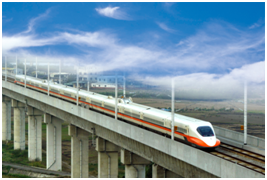 individually you can either use public transportation or rent a car. If you intend to drive in Taiwan don’t forget to bring a valid international drivers license, and keep in mind that driving habits may be different from those in your home country. Alternatively, you could use the railroad system which goes all around the island. The main cities on the west coast are also linked by the High Speed Rail, a bullet train that takes passengers from Taipei to Kaohsiung in less than 90 minutes. The introduction of the HSR has brought the demise of domestic air travel which could not compete in price or convenience with the bullet train. The only domestic air-routes left are those serving destinations on the east coast and the outlaying islands.
individually you can either use public transportation or rent a car. If you intend to drive in Taiwan don’t forget to bring a valid international drivers license, and keep in mind that driving habits may be different from those in your home country. Alternatively, you could use the railroad system which goes all around the island. The main cities on the west coast are also linked by the High Speed Rail, a bullet train that takes passengers from Taipei to Kaohsiung in less than 90 minutes. The introduction of the HSR has brought the demise of domestic air travel which could not compete in price or convenience with the bullet train. The only domestic air-routes left are those serving destinations on the east coast and the outlaying islands.
Taipei and Kaohsiung, Taiwan’s two largest cities have an inexpensive and very convenient Mass Rapid Transit (MRT) system. Additionally, there are numerous bus lines and traveling by taxi is quite cheap.
Useful links include:
China Airlines
EVA Air
Taiwan Railway
Taiwan High Speed Rail (HSR)
Taipei MRT
Entry visa to Taiwan
Citizens of many countries are delivered a visa-exempt entry permit on arrival in Taiwan. Depending on your country of origin this permit will allow you to stay in Taiwan for 30 days or more. Those who plan to stay in Taiwan for longer than a visa-exempt permit affords, or those who come from countries not included in this scheme need to apply for a 60-day Visitor Visa in a representative office of the Republic of China (Taiwan) abroad. A visitor visa can usually be extended in Taiwan whereas a visa-exempt permit cannot.
For the latest on visa requirements for citizens of your country go to the website of the bureau of consular affairs of the Ministry of Foreign Affairs (MOFA).
Cost of Travel
Taiwan's currency is the New Taiwan Dollar (NTD), referred to in Chinese as Yuan or Kuai. It comes in coin denominations of NT$1, $5, $10, $20, and $50, and bills of NT$100 (red), $500 (brown) and $1,000 (blue). 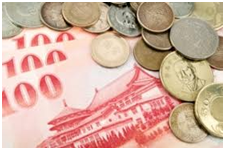 There are also NT $200 (green) and $2,000 (purple) bills, but they are not very common, and you may well never see one during your stay. There are ATMs everywhere to withdraw cash in local currency, and most banks offer foreign exchange services. However, travelers checks are not easy to cash, and are not accepted as a means of payment in stores or restaurants. Credit cards can be used in most hotels, restaurants (not in small eateries though), department stores, and supermarkets.
There are also NT $200 (green) and $2,000 (purple) bills, but they are not very common, and you may well never see one during your stay. There are ATMs everywhere to withdraw cash in local currency, and most banks offer foreign exchange services. However, travelers checks are not easy to cash, and are not accepted as a means of payment in stores or restaurants. Credit cards can be used in most hotels, restaurants (not in small eateries though), department stores, and supermarkets.
How much you will spend while traveling in Taiwan greatly depends on the type of accommodation you will choose during your stay. Although local hotels have comfortable and clean rooms in the NT 1,000~3,000 range, prices can be steeper for rooms in international-chain hotels or cheaper in guest houses. Food is usually a bargain except, again, if you go to some particularly fancy places or to international theme-restaurants which are more expensive than the average eateries. Transportation is usually very affordable especially if you use public transportation. It is possible to travel from one end of the island to the other for less than NT 1,000, though the price will be higher if you take the High Speed Rail. In the cities a ride in a metered-taxi will cost between NT100 and 500 depending on the distance. There is a small surcharge if you use a taxi at night and if the taxi needs to use a toll road.
Tipping is not expected in Taiwan and people might actually be surprised if you do. Staff in high-end international hotels is more accustomed to the practice and are more likely to accept a tip. Many establishments automatically add a service charge, and there is no need to tip a taxi driver.
Language
As previously mentioned Mandarin Chinese is the official language in Taiwan and is spoken by almost everyone. The Taiwanese dialect is more prevalent in the south of the country than in the north. English is taught at school, but fluency varies greatly; foreigners should not assume that everyone speaks English or they might be in for a lot of frustration.
Food
 Eating is probably the favorite activity for many Taiwanese; food is everywhere and can be found at any time, day and night.
For Taiwanese, food is often associated with having a good time with friends or family, and it is likely that it will be the starting topic of conversations you will have with locals. The variety is astonishing and is a result of the geography and the history of the country. Surrounded by ocean and covered in mountains it is no surprise that countless animals and plants from these habitats have found their way into the plates and bowls of those living there.
Eating is probably the favorite activity for many Taiwanese; food is everywhere and can be found at any time, day and night.
For Taiwanese, food is often associated with having a good time with friends or family, and it is likely that it will be the starting topic of conversations you will have with locals. The variety is astonishing and is a result of the geography and the history of the country. Surrounded by ocean and covered in mountains it is no surprise that countless animals and plants from these habitats have found their way into the plates and bowls of those living there.
 Add to this 50 years of Japanese occupation, and an influx of over one million people who came from various parts of China, and you’ll understand why there seem to be so many cuisines. The rule when going on a food journey in Taiwan is to keep an open mind and sample, sample, sample. Eating in Taiwan is not limited to
Add to this 50 years of Japanese occupation, and an influx of over one million people who came from various parts of China, and you’ll understand why there seem to be so many cuisines. The rule when going on a food journey in Taiwan is to keep an open mind and sample, sample, sample. Eating in Taiwan is not limited to
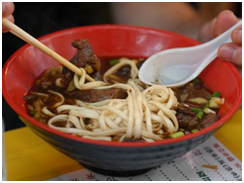 breakfast, lunch, and dinner; there are many opportunities to snack at any time of the day or night. If you get to visit a Taiwanese home you might be surprised at how small the kitchen often is considering how important food is for the people here; the reason is that many people eat out, and in many families few meals are actually prepared at home. Eating out can actually be cheaper that cooking at home; the streets are lined with reasonably priced eateries and night markets provide a great opportunity to indulge in the locals’ favorite pastimes…eating and shopping.
breakfast, lunch, and dinner; there are many opportunities to snack at any time of the day or night. If you get to visit a Taiwanese home you might be surprised at how small the kitchen often is considering how important food is for the people here; the reason is that many people eat out, and in many families few meals are actually prepared at home. Eating out can actually be cheaper that cooking at home; the streets are lined with reasonably priced eateries and night markets provide a great opportunity to indulge in the locals’ favorite pastimes…eating and shopping.
 Don’t be too put off by the unfamiliar look or smell of the fare on display, you might be in for a culinary -good- surprise. For the less adventurous and those who crave western food, fast-food chains like McDonalds, KFC, or Starbucks are everywhere, and the largest cities also have a good selection of international restaurants. If you like Japanese food you are in for a treat; Taiwan (especially Taipei) is probably only second to Japan for the number of Japanese eateries.
Don’t be too put off by the unfamiliar look or smell of the fare on display, you might be in for a culinary -good- surprise. For the less adventurous and those who crave western food, fast-food chains like McDonalds, KFC, or Starbucks are everywhere, and the largest cities also have a good selection of international restaurants. If you like Japanese food you are in for a treat; Taiwan (especially Taipei) is probably only second to Japan for the number of Japanese eateries.
Things to see and do
Go to the Taiwan Tourism Bureau website for more information about travelling in Taiwan.
It is likely that your first and maybe only stop in Taiwan will be Taipei (unless you come for treatment at Min-Sheng General Hospital, then it will be Taoyuan). Although Taipei, the capital and largest city in Taiwan has a lot to offer and has slowly morphed into one of the most pleasant cities in the region (ask those who have been here for a while), it is hardly representative of the diversity that the island has to offer. The good news is that the infrastructure is very developed and the island compact enough to enable most travelers to get an idea of what is out there even if you are only here for a few days. Here is a short list of things to see and do in Taiwan; this is only a sample list and there are numerous other items that can be added to it.
In the north of Taiwan:
Taipei and northern Taiwan:
 - The National Palace Museum for a mind-boggling exhibition of ancient Chinese artifacts
- The National Palace Museum for a mind-boggling exhibition of ancient Chinese artifacts
- The Chiang Kai Chek Memorial Hall Park
- Taipei 101 building
- Longshan Temple
- Night markets
- Hiking and soaking in the hills and hot springs around Taipei
- The Gondola to the tea gardens in Mutza
- The old mining town of Chiofen
East Coast
 - A ride along the scenic east coast will probably be the highlight of any trip to Taiwan. Although tunnels have since been dug through the mountains to make the road passable all year round, the section between Yilan and Hualien was originally carved in cliffs a thousand feet above the ocean; no need to say that the views can been breathtaking.
- A ride along the scenic east coast will probably be the highlight of any trip to Taiwan. Although tunnels have since been dug through the mountains to make the road passable all year round, the section between Yilan and Hualien was originally carved in cliffs a thousand feet above the ocean; no need to say that the views can been breathtaking.
- Hualien is the starting point for a trip to Taroko Gorge, a long marble canyon with twist and turns that leads to more waterfalls, hot springs, and superb mountain scenery.
- The road down to Taitung offers more beaches and views over the Pacific Ocean. The area is also a good place to meet Taiwan Aborigines, and Taitung is the jumping off place for trips to Green Island and Orchid Island.
Central Taiwan
- Surrounded by hills dotted with pagodas and temples Sun Moon Lake offers beautiful views in a peaceful setting. The area is popular with tourists though, and it can get very crowded especially on weekends.
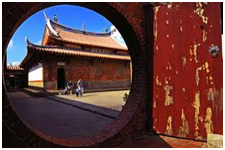 Lukang is one of Taiwan’s oldest cities and the best place to go if you want to see traditional Chinese architecture. Lukang was an important trading port and probably central Taiwan’s most populous city until the beginning of the 20th century. However, today it is a sleepy town with countless old houses and temples that offers a glimpse at how things…used to be.
Lukang is one of Taiwan’s oldest cities and the best place to go if you want to see traditional Chinese architecture. Lukang was an important trading port and probably central Taiwan’s most populous city until the beginning of the 20th century. However, today it is a sleepy town with countless old houses and temples that offers a glimpse at how things…used to be.
- The central island-cross highway is one of several roads that cross the island from west to east going through Taroko Gorge at the end of its eastern section. Driving or riding along that road you are guaranteed fantastic views at every twist and turn. On the way the road climbs above 3,000 meters and passes Mount Hehuan which sometimes gets dusted with snow in the winter. Mount Hehuan is the start of some wonderful hikes to peaks in the area.
Southern Taiwan
- Tainan was the capital of Taiwan until 1885 and is considered the cradle of Taiwanese culture. Today Taiwan can be dubbed the “Temple Capital of Taiwan” and has a lot to offer those who want to experience a more traditional Taiwan. The Taiwanese dialect is also more prevalent here and probably spoken on a daily base by more people here than in other places in Taiwan.
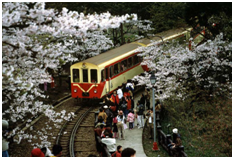 - Mount Ali has some of the most picturesque alpine scenery in Taiwan. A great way to travel there is to use the narrow gage train that departs from Chiayi and winds its way up the mountain in over three hours. The area around Mt Ali produces some of the best and highly priced tea in the world.
- Mount Ali has some of the most picturesque alpine scenery in Taiwan. A great way to travel there is to use the narrow gage train that departs from Chiayi and winds its way up the mountain in over three hours. The area around Mt Ali produces some of the best and highly priced tea in the world.
 Taiwan’s answer to the white sand beaches of destinations in south-east Asia is Kenting. Thanks to its tropical climate, fine beaches, and national park, Kenting has become the premier resort beach in Taiwan. It makes for a pleasant break out of the city, especially in the winter, but can get impossibly crowded on weekends and holidays.
Taiwan’s answer to the white sand beaches of destinations in south-east Asia is Kenting. Thanks to its tropical climate, fine beaches, and national park, Kenting has become the premier resort beach in Taiwan. It makes for a pleasant break out of the city, especially in the winter, but can get impossibly crowded on weekends and holidays.